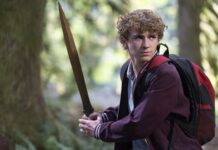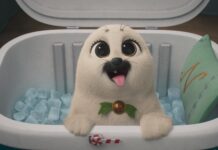This post contains affiliate links and our team will be compensated if you make a purchase after clicking on the links.
In its 92-year history, Walt Disney Animation Studios has created a long and storied legacy of talking-animal films—from Mickey Mouse’s debut short “Steamboat Willie,” to “Bambi,” “Dumbo,” “The Jungle Book,” “Robin Hood” and “The Lion King.” Walt Disney Animation Studios returns to the wild with next spring’s feature film “Zootopia.”
Zootopia is a city like no other that’s comprised of neighborhoods that celebrate different cultures. There’s ritzy Sahara Square for desert animals, Tundratown for the polar bears and moose, the hot and humid Rain Forest District, Little Rodentia for the the tiniest mice, and Bunnyburrows for the millions and millions of super cute bunnies. The downtown area, Savanna Central, is a melting pot where a wide array of mammals from every environment come together—a place where no matter what you are, from the biggest elephant to the smallest shrew, you can be anything. But when rookie officer Judy Hopps arrives, she discovers that being the first bunny on a police force of big, tough animals isn’t so easy. Determined to prove herself, she jumps at the opportunity to crack a case, even if it means partnering with a fast-talking, scam-artist fox, Nick Wilde, to solve a mystery.

The team of artists, technicians and storytellers came together to build a multifaceted city that features tiny transport systems within larger ones, and a network of interlaced tubes, ramps, escalators and entryways big and small. The city is home to animals of not only varying sizes, but also varying needs. Zootopia is made up of many different environmental districts. Each district is designed for a specific type of animal—the look, the climate, everything reflects the habitat the animals need to thrive. And by bringing all these environments, all these different kinds of animals together in one big melting pot of a city—we create opportunities and relationships between animals that wouldn’t otherwise be possible.
We recently sat down with Art Director of Environments Matthias Lechner and Environment Look Supervisor Lance Summers to discuss how they built the world of Zootopia. 3 1/2 years ago we started to design this world with a small team. How do you build a world for animals, built by animals stated Lechner. When you look at a building, we wanted to make sure the audience knows what they are looking at. We used a lot of patterns and details, like flagstones and animal patterns he added. Scale was also a challenge since we had animals of all sizes from mice to elephants. The idea is to make the city look realistic but also a city that animals would live in.

Inspired by cities like New York and London, artists blended traditional cityscapes with global influences and animal infusions. For example, Tundratown sports onion-shaped domes in a nod to Russian architecture, and the Zootopia train station features an interior tropical garden inspired by Madrid’s Central station, but with horn-shaped towers. With a Southern California-like central climate, Zootopia features artificial climate zones to accommodate the variety of inhabitants. Extensive research provided the logic behind placing opposing climates in adjoining neighborhoods.
Summers discussed how they work with the different departments, by setting up all the materials, like Glass and metal. He added that they wanted to make sure they add life to the world they create. It adds value and richness to the scene. We are also in charge of all the foliage to help it feel alive and lived in. One of the challenges we had was building the Rain Forrest said Summers. We had to create plants and foliage that’s art directable. We start with the base and then we added the elements like real plant growth. In this film, almost all of our plants are actually alive. Another challenge we ran into was the scope and scale. We had to integrate the plants with the animals and their world.

While the possibilities were endless—and explored—filmmakers had to narrow down the districts of Zootopia. Ultimately, they settled on six key areas, giving each a specific color palette and details. Sahara Square, Tundratown, The Rain Forest District, Bunnyburrow, Savanna Central and Little Rodentia.
Walt Disney Animation Studios’ “Zootopia,” a comedy-adventure directed by Byron Howard (“Tangled,” “Bolt”) and Rich Moore (“Wreck-It Ralph,” “The Simpsons”) and co-directed by Jared Bush (“Penn Zero: Part-Time Hero”), opens in theaters on March 4, 2016.













